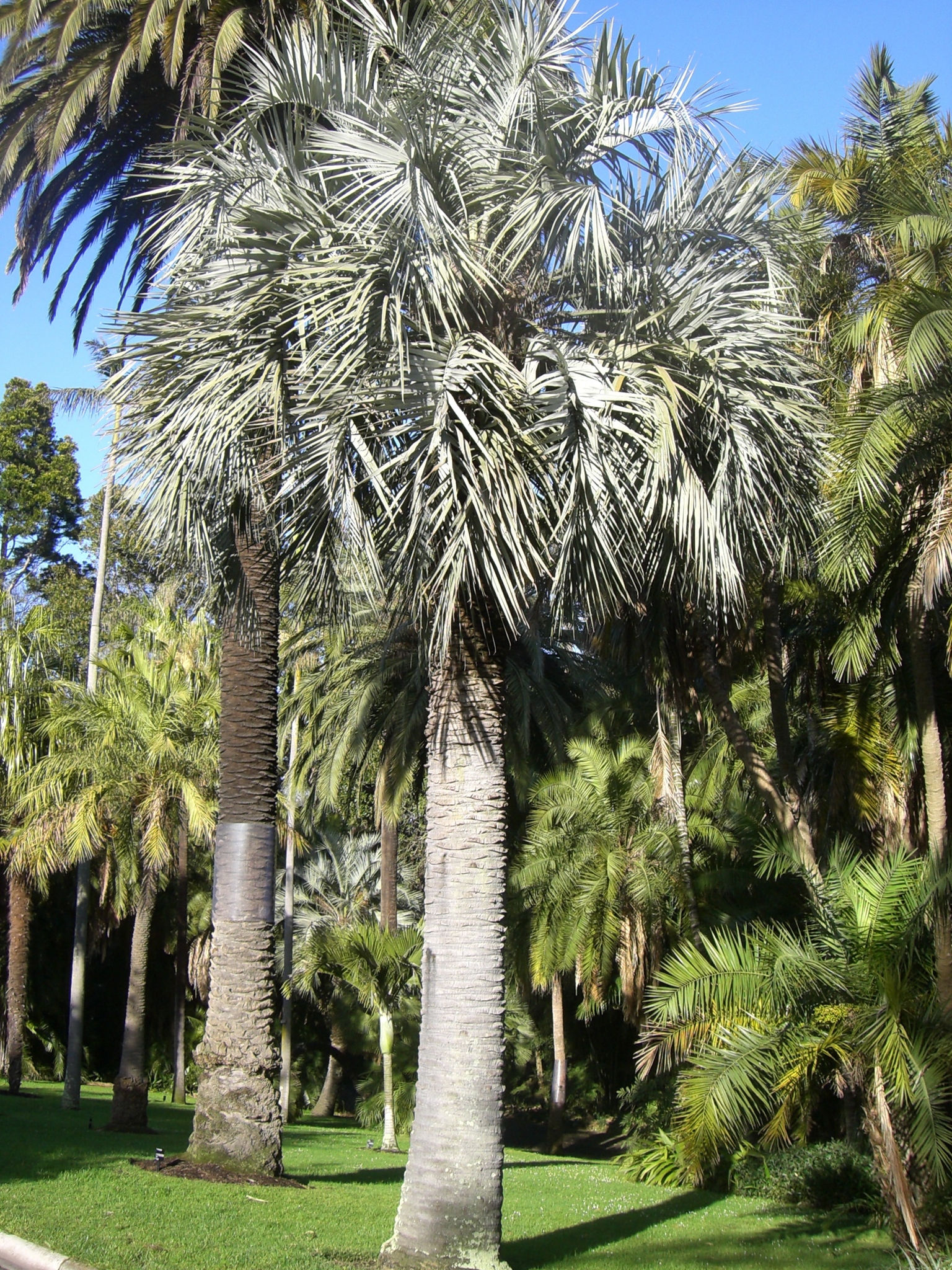
A Portuguese corruption of the Indian word meaning toothed or spiny and used as the local Brazilian name for one species in the genus.
Solitary spiny or spineless palms with a solitary woody trunk. Crownshaft absent. Leaves feathershaped, often arching. Leaflets narrow, erect, pointed. Leaf stalk spiny (cf. mostly spineless stalks of Syagrus). Male and female flowers on same plant. Panicle arising among the leaves. Fruit relatively large, colourful, 1 seeded.
A few species have become very popular in cultivation.This genus sometimes included with Syagrus.
Rare sterile hybrids can occur with Syagrus and Jubaea.
Seeds take 12-18 months to germinate and seedlings appear erratically. Careful cracking of the hard seed coat may be beneficial.
Palms with a solitary woody trunk and no crownshaft; leaves feathery, arching, with spined stalks; leaflets generally directed upwards to give the frond as a whole a V-shape, narrow and relatively large; fruit colourful. Closely related to Syagrus which, at one time, was separated by having fibrous or smooth leaf stalks and deeply grooved spathes (Butia having spiny leaf stalks and smooth spathes). Butia is now recognised by species with similar leaf anatomy and smooth spathes, but it also includes 3 species with smooth leaf stalks. Nevertheless the most obvious former character of difference (the spiny leaf stalks) can still be used for the commonly cultivated species.
About 8 species from southern Brazil, Uruguay, Paraguay and Argentina.
Glassman (1979).
Source: (2005). Arecaceae. In: . Horticultural Flora of South-eastern Australia. Volume 5. Flowering plants. Monocotyledons. The identification of garden and cultivated plants. University of New South Wales Press.
